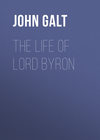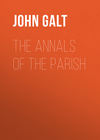Kitabı oku: «The Life, Studies, and Works of Benjamin West, Esq.», sayfa 10
Chap. V
The opening of the Royal Academy. – The Death of General Wolfe. – Anecdote of Sir Joshua Reynolds. – New Pictures ordered by the King. – Origin of the Series of Historical Pictures painted for Windsor Castle. – Design for a grand Chapel in Windsor Castle, to illustrate the History of revealed Religion. – His Majesty's Scruples on the Subject. – His confidential Consultation with several eminent Divines. – The Design undertaken.
When the Academy was opened, the approbation which the Regulus received at the exhibition gratified the King, and he resolved to give Mr. West still farther encouragement. Accordingly, he soon after sent for him, and mentioned that he wished him to paint another picture, and that the subject he had chosen was Hamilcar making his son Hannibal swear implacable enmity against the Romans. The painting being finished it was earned to Buckingham-house, and His Majesty, after looking at it with visible satisfaction, said, that he thought Mr. West could not do better than provide him with suitable subjects to fill the unoccupied pannels of the room in which the two pictures were then placed.
About this period, Mr. West had finished his Death of Wolfe, which excited a great sensation, both on account of its general merits as a work of art, and for representing the characters in the modern military costume. The King mentioned that he heard much of the picture, but he was informed that the dignity of the subject had been impaired by the latter circumstance; observing that it was thought very ridiculous to exhibit heroes in coats, breeches, and cock'd hats. The Artist replied, that he was quite aware of the objection, but that it was founded in prejudice, adding, with His Majesty's permission, he would relate an anecdote connected with that particular point.
"When it was understood that I intended to paint the characters as they had actually appeared in the scene, the Archbishop of York called on Reynolds and asked his opinion, the result of which was that they came together to my house. For His Grace was apprehensive that, by persevering in my intention, I might lose some portion of the reputation which he was pleased to think I had acquired by his picture of Agrippina, and Your Majesty's of Regulus; and he was anxious to avert the misfortune by his friendly interposition. He informed me of the object of their visit, and that Reynolds wished to dissuade me from running so great a risk. I could not but feel highly gratified by so much solicitude, and acknowledged myself ready to attend to whatever Reynolds had to say, and even to adopt his advice, if it appeared to me founded on any proper principles. Reynolds then began a very ingenious and elegant dissertation on the state of the public taste in this country, and the danger which every attempt at innovation necessarily incurred of repulse or ridicule; and he concluded with urging me earnestly to adopt the classic costume of antiquity, as much more becoming the inherent greatness of my subject than the modern garb of war. I listened to him with the utmost attention in my power to give, but could perceive no principle in what he had delivered; only a strain of persuasion to induce me to comply with an existing prejudice, – a prejudice which I thought could not be too soon removed. When he had finished his discourse, I begged him to hear what I had to state in reply, and I began by remarking that the event intended to be commemorated took place on the 13th of September, 1758, in a region of the world unknown to the Greeks and Romans, and at a period of time when no such nations, nor heroes in their costume, any longer existed. The subject I have to represent is the conquest of a great province of America by the British troops. It is a topic that history will proudly record, and the same truth that guides the pen of the historian should govern the pencil of the artist. I consider myself as undertaking to tell this great event to the eye of the world; but if, instead of the facts of the transaction, I represent classical fictions, how shall I be understood by posterity! The only reason for adopting the Greek and Roman dresses, is the picturesque forms of which their drapery is susceptible; but is this an advantage for which all the truth and propriety of the subject should be sacrificed? I want to mark the date, the place, and the parties engaged in the event; and if I am not able to dispose of the circumstances in a picturesque manner, no academical distribution of Greek or Roman costume will enable me to do justice to the subject. However, without insisting upon principles to which I intend to adhere, I feel myself so profoundly impressed with the friendship of this interference, that when the picture is finished, if you do not approve of it, I will consign it to the closet, whatever may be my own opinion of the execution. They soon after took their leave, and in due time I called on the Archbishop, and fixed a day with him to come with Reynolds to see the painting. They came accordingly, and the latter without speaking, after his first cursory glance, seated himself before the picture, and examined it with deep and minute attention for about half an hour. He then rose, and said to His Grace, Mr. West has conquered. He has treated his subject as it ought to be treated. I retract my objections against the introduction of any other circumstances into historical pictures than those which are requisite and appropriate; and I foresee that this picture will not only become one of the most popular, but occasion a revolution in the art."
On Mr. West pausing, the King said, "I wish that I had known all this before, for the objection has been the means of Lord Grosvenor getting the picture; but you shall make a copy for me." His Majesty then entered into some further conversation respecting subjects for paintings to adorn the apartment; and Mr. West suggested that the Death of Epaminondas would, as a classic subject, and with Grecian circumstances, make a suitable contrast with the Death of Wolfe. The King received this idea with avidity; and the conversation being pursued further on the same topic, the Artist also proposed the Death of the Chevalier Bayard for another picture, which would serve to illustrate the heroism and peculiarities of the middle ages. Two pannels were still unprovided; and Mr. West, with submission to His Majesty, begged that he might be allowed to take the incident of Cyrus liberating the Family of the King of Armenia for the one, and of Segestus, and his daughter, brought before Germanicus, for the other. The King was much pleased with the latter idea; a notion being entertained by some antiquaries that the Hanoverian family are the descendants of the daughter.
During the time that our Artist was engaged in these works, he was frequently at the palace with the King; and His Majesty always turned the conversation on the means of promoting the fine arts, and upon the principles which should govern artists in the cultivation of their genius. In one of these conversations, Mr. West happened to remark, that he had been much disgusted in Italy at seeing the base use to which the talents of the painters in that country had been too often employed; many of their noblest efforts being devoted to illustrate monkish legends, in which no one took any interest, while the great events in the history of their country were but seldom touched. This led to some further reflections; and the King, recollecting that Windsor-Castle had, in its present form, been erected by Edward the Third, said, that he thought the achievements of his splendid reign were well calculated for pictures, and would prove very suitable ornaments to the halls and chambers of that venerable edifice. To this incident, the arts are indebted for the series of pictures which bring the victories of Cressy and Poictiers, with the other triumphal incidents of that time, again, as it were, into form and being, with a veracity of historical fact and circumstance which render the masquerades by Vario even a greater disgrace to St. George's Hall than they are to the taste of the age in which they were painted.
In the execution of these different historical subjects, the King took a great personal interests, and one piece became the cause of another, until he actually acquired a feeling like enthusiasm for the arts. When he had resolved to adorn Windsor-Castle with the achievements and great events of the reign of Edward the Third, he began to think that the tolerant temper of the age was favourable to the introduction of pictures into the churches: at the same time, his scrupulous respect for what was understood to be the usage, if not the law, relative to the case, prevented him for some time from taking any decisive step. In the course of different conversations with Mr. West, on this subject, he formed the design of erecting a magnificent oratory, or private chapel, in the Horns' Court of Windsor-Castle, for the purpose of displaying a pictorial illustration of the history of revealed religion. But, before engaging in this superb project, he thought it necessary to consult some eminent members of the Church, who enjoyed his confidence, as to the propriety of the design. Accordingly, he desired Mr. West to draw up a list of subjects from the Bible, susceptible of pictorial representation, which Christians, of all denominations, might contemplate without offence to their tenets; and he invited Dr. Hurd, afterwards Bishop of Worcester, Dr. Douglas, Bishop of Salisbury, the Dean of Windsor, and several other dignitaries, along with the Artist, to consider the business. He explained to the meeting his scruples, declaring that he did not, in a matter of this kind, owing to his high station in the state, feel himself a free agent; that he was certainly desirous of seeing the churches adorned with the endeavours of art, and would deem it the greatest glory of his reign to be distinguished, above all others in the annals of the kingdom, for the progress and successful cultivation of the arts of peace. "But, when I reflect," said His Majesty, "how the ornaments of art in the churches were condemned at the Reformation, and still more recently in the unhappy times of Charles the First, I am anxious to govern my own wishes not only by what is right, but by what is prudent, in this matter. If it is conceived that I am tacitly bound, as Head of the Church of England, to prevent any such ornaments from being introduced into places of worship; or if it be considered as at all savouring in any degree of a popish practice, however decidedly I may myself think it innocent, I will proceed no farther in the business. But, if the church may be adorned with pictures, illustrative of great events in the history of religion, as the Bible itself often is with engravings, I will gladly proceed with the execution of this design." Little else passed at this interview; but he requested the churchmen to examine the matter thoroughly; and appointed a particular day for them to report to him the result of their investigation: presenting to them, at the same time, a paper, containing a list of thirty-five subjects which he had formed with the Artist, for the decorations of the intended chapel.
On the day appointed, Mr. West again met those eminent members of the hierarchy in the royal presence: when Dr. Hurd reported to His Majesty, that they had very seriously considered the important business which had been confided to them; that, having bestowed on it their gravest attention, they were unanimously of opinion, that the introduction of paintings into the chapel, which His Majesty intended to erect, would, in no respect whatever, violate the laws or usages of the Church of England; and that, having examined the list of subjects, which he proposed should constitute the decorations, there was not one of them, but, which properly treated, even a Quaker might contemplate with edification. This inadvertent observation attracted the King's attention; and he said, that the Quakers were a body of Christians for whom he entertained the very highest respect, and that he thought, but for the obligations of his birth, he should himself have been a Quaker; and he particularly enlarged on their peaceful demeanour and benevolence towards one another.
The result of this conference was, that Mr. West immediately received instructions to make designs from the list of subjects; and afterwards with the King himself, he assisted to form an architectural plan of the chapel, which it was proposed should be ninety feet in length by fifty in breadth. When some progress had been made in the paintings, Mr. Wyat, who had succeeded Sir William Chambers as the royal architect, received orders to carry this plan into execution; and the grand flight of steps in the great staircase, executed by that architect, was designed to lead immediately to a door which should open into the royal closet, in the new chapel of REVEALED RELIGION.
Chap. VI
Singular Anecdote respecting the Author of the Letters of Junius. – Of Lachlan M'Lean. – Anecdote of the Duke of Grafton. – Of the Marquis of Lansdowne. – Of Sir Philip Francis; Critique on the Transfiguration of Raphael by Sir Philip Francis, and Objections to his opinion.
By the eminent station which Mr. West has so long held among the artists, and admirers of the fine arts, in this country, he became personally acquainted with almost every literary man of celebrity; and being for many years a general visitor at the literary club, immortalised as the haunt of Johnson, Burke, Garrick, Goldsmith, and Reynolds, he acquired, without particularly attending to the literature of the day, an extensive acquaintance with the principal topics which, from time to time, engaged the attention of men of letters. An incident, however, of a curious nature, has brought him to be a party, in some degree, with the singular question respecting the mysterious author of the celebrated letters of Junius. On the morning that the first of these famous invectives appeared, his friend Governor Hamilton happened to call, and enquiring the news, Mr. West informed him of that bold and daring epistle: ringing for his servant at the same time, he desired the newspaper to be brought in. Hamilton read it over with great attention, and when he had done, laid it on his knees, in a manner that particularly attracted the notice of the painter, who was standing at his easel. "This letter," said Hamilton, in a tone of vehement feeling, "is by that damned scoundrel M'Lean." – "What M'Lean?" enquired Mr. West. – "The surgeon of Otway's regiment: the fellow who attacked me so virulently in the Philadelphian newspaper, on account of the part I felt it my duty to take, against one of the officers, a captain, for a scandalous breach of the privileges of hospitality, in seducing the wife of a very respectable man. This letter is by him. I know these very words: I may well remember them," and he read over several phrases and sentences which M'Lean had employed against him. Mr. West then informed the Governor, that M'Lean was in this country, and that he was personally acquainted with him. "He came over," said Mr. West, "with Colonel Barry, by whom he was introduced to Lord Shelburn, (afterwards Marquis of Lansdowne,) and is at present private secretary to His Lordship."
Throughout the progress of the controversy with Junius, Hamilton remained firm in his opinion, that the author was no other than the same Lachlan M'Lean, but at the literary club the general opinion ascribed the letters for some time to Samuel Dyer. The sequel of this anecdote is curious. M'Lean, owing to a great impediment in his utterance, never made any figure in conversation; and passed with most people as a person of no particular attainments. But when Lord Shelburn came into office, he was appointed Under Secretary of State, and subsequently nominated to a Governorship in India: a rapidity of promotion to a man without family or parliamentary interest, that can only be explained by a profound conviction, on the part of his patron, of his superior talents, and perhaps, also, from a strong sense of some peculiar obligation. M'Lean sailed for India in the Aurora frigate, and was lost, in the wreck of that ship, on the coast of Africa. That the letters of Junius were not ascribed to him by any party is not surprising, for his literary talents were unknown to the public; but the general opinion of all men at the time was that they were the production of some person in connection with Lord Shelburn.
Upon this subject, I hold no particular opinion of my own; nor, indeed, should I have perhaps noticed the circumstance at all, but for a recent most ingenious publication which has ascribed these celebrated letters to the late Sir Philip Francis. One thing, however, merits attention in this curious controversy. In the Monthly Magazine for July, 1813, there is an interesting account of a conversation between Sir Richard Phillips and the Marquis of Lansdowne on this subject; in which His Lordship speaks of the obligation to secrecy imposed on himself in the question as having been removed by death; an incidental expression that at once intimated a knowledge of the author, and that he was dead at the time when this conversation took place. The importance of the matter, as an object of literary curiosity, will excuse the introduction, in an abbreviated form, of what passed at that interview, as well as of some minor circumstances connected with the question.
During the printing of Almon's edition of Junius, in which he endeavoured to show that the letters were written by a Mr. Walter Boyd, Sir Richard Phillips, the publisher of that work, sought opinions among the characters then surviving, whose names had been mixed with the writings of Junius; and he addressed himself particularly to the Duke of Grafton, the Marquis of Lansdowne, Mr. Horne Tooke, and Mr. Grattan. Through two friends of the Duke of Grafton he was informed, "that His Grace had endeavoured to live down the calumnies of Junius, and to forget the name of the author; and that, at the period of the publication, offers were made to him of legal evidence on which to convict the author of a libel; but that, as he had then treated the man with contempt, he should decline to disturb him after so great a lapse of time." From this communication it would seem, that the Duke believed that he knew the author, and also that he was still alive.
Sir Richard, on calling upon the Marquis of Lansdowne, to whom he was personally known, found him in his sick chamber, suffering under a general breaking up of the constitution, but in his usual flow of spirits, anecdote, and conversation. On mentioning Almon's new edition of Junius, and that the editor had fixed on Boyd as the author, the Marquis exclaimed, "I thought Almon had known better: I gave him credit for more discernment: the world will, however, not be deceived by him; for there is higher evidence than his opinion. Look at Boyd's other writings: he never did write like Junius; and never could write like Junius. Internal evidence destroys the hypothesis of Almon." Sir Richard then said, that many persons had ascribed these letters to His Lordship; and that the world at large conceived that, at least, he was not unacquainted with the author. The Marquis smiled, and said, "No, no: I am not equal to Junius: I could not be the author; but the grounds of secrecy are now so far removed by death, and changes of circumstances, that it is unnecessary the author of Junius should much longer be unknown. The world are curious about him; and I could make a very interesting publication on the subject. I knew Junius; and I knew all about the writing and production of those letters. But look at my own condition now: I don't think I can live another week: my legs, my strength, tell me so; but the doctors, who always flatter sick men, assure me I am in no immediate danger. They order me into the country, and I am going there. If I live over the summer, which, however, I do not expect, I promise you a very interesting pamphlet about Junius. I will put my name to it: I will set that question at rest for ever."
Sir Richard looked at the swollen limbs and other symptoms threatening the dissolution of this distinguished nobleman; and, convinced that he was, in truth, never likely to see him again, and that the secret of Junius might be lost with him, turned the conversation to the various persons who had, at different times, been named as the Junius; and, after mentioning five or six whose respective pretensions the Marquis treated as ridiculous, His Lordship said, "It is of no use to pursue the matter further at this time. I will, however, tell you this for your guide, Junius has never yet been publicly named. None of the parties ever guessed at as Junius were the true Junius. Nobody has ever suspected him. I knew him, and knew all about it; and I pledge myself, if these legs will permit me, to give you a pamphlet on the subject, as soon as I feel myself equal to the labour." Sir Richard soon after took his leave; and about a week after the Marquis expired.
From Horne Tooke no information could be obtained: whenever Junius was mentioned, he lost the balance of his mind, and indulged himself in so much vanity, conceit, and ingenuity, that it was almost useless to speak with him on the subject.
Mr. Grattan wrote a very candid denial of any knowledge of the matter, in a letter which was printed in the preface to Almon's edition.
Of the pretension afterwards set forward for Dr. Wilmot, I believe it was never entertained or supported by any good evidence: Dr. Francis, the father of Sir Philip, had been long before mentioned, but for what reason I have never been able to ascertain. The answer of Sir Philip himself on the subject is, however, curiously equivocal, at least it so strikes me; although it is generally considered as a decided denial. It is as follows: "The great civility of your letter induces me to answer it, which, with reference merely to its subject-matter, I should have declined. Whether you will assist in giving currency to a silly, malignant falsehood, is a question for your own discretion: to me it is a matter of perfect indifference." But notwithstanding all this, an amusingly mysterious circumstance has, I am informed, transpired since the death of Sir Philip. In a box, it is said, which he carefully deposited with his banker's, and which was not to be opened till after his death, a copy of the publication, "Junius identified," with a common copy of the letters of Junius, were found. I shall offer no comment on this occurrence, for even granting that it was true, it might have been but a playful trick-if Sir Philip Francis was, in any respect, a humorist. But I have already digressed too far from the immediate object of my work; and I cannot make a better amends to my readers than by inserting here a short paper, written by that eminent person, and addressed to Mr. West. It is a critique on the Transfiguration by Raphael, in which Sir Philip evinces considerable ingenuity, by attempting not only to explain a defect in the composition, felt by every man of taste, in the midst of the delight which, in other respects, it never fails to produce, but to show that, so far from being any defect, it is in fact a great beauty.
Transfiguration by Raphael
The title of this picture is a misnomer. The picture itself tells you it is the Ascension. The Transfiguration is another incident, which happened long before the Ascension, and is recited in the ninth chapter of St. Luke: – "When the countenance of Jesus was changed, and he became ετεϑον and his clothing was white, and lightened." The robe of the ascending Christ is blue.
The painter brings different incidents together to constitute one plot. The picture consists of three separate groupes, combined and united in one scheme or action.
I. Jesus ascending perpendicularly into the air, clothed in blue raiment, and attended by two other figures.
II. Some of his disciples on the Mount, who see the ascent, and lie dazzled and confounded by the sight.
III. A number of persons at the bottom of the Mount, who appear to look intently on a young man possessed by a devil, and convulsed. None of them see the Ascension but the young man, or rather the devil, who was in him, does see it. On all similar occasions, those fallen angels know the Christ, and acknowledge him. The other figures are agitated with astonishment and terror, variously and distinctly expressed in every one of them, at sight of the effect which they see is made upon him by some object which they do not see.
This is the sublime imagination, by which the lower part of the picture is connected with the upper.
P. FRANCIS.
13th July, 1816.
But although it must be confessed that this comment is exceedingly ingenious, in so far as it explains the painter's design in representing the demoniac boy, as the connecting link between the action on the Mount, and the groupe at the foot of it; yet, upon an examination of the picture, it will be found that it does not exhibit the Ascension, but the Transfiguration; and I beg leave to refer to a letter, from my friend Mr. M'Gillivray, in the Appendix which seems to me as perfectly satisfactory on the subject as any thing of the kind I ever met with. Mr. West was of the same opinion as Mr. M'Gillivray; but in conversing with him on the subject, he did not enter into so distinct an explanation of his reasons for dissenting from the speculation of Sir Philip Francis. In criticism, however, whether the matter in question be works of art, or of literature, the best opinion is exactly that which is the most reasonable; and the point at issue here, is not one in which an artist's judgment can be allowed greater weight than that of any other man.










